In the world of cycling, every gram counts. Whether you're a seasoned pro or a weekend warrior, finding the perfect balance between comfort, weight, and performance is crucial. Enter the full carbon saddle – a game-changer for cyclists everywhere. Today, we'll be taking a closer look at one such saddle: the CS200 from Trifox Bike, a product that promises to deliver on all fronts.
At first glance, the CS200 is a sleek, minimalist design that immediately catches the eye. Its full carbon construction not only looks high-end but also serves a functional purpose. Carbon fiber is renowned for its strength-to-weight ratio, meaning that despite its lightweight nature, the saddle can withstand the rigors of even the most intense rides.
But what truly sets the CS200 apart is its ability to balance comfort, weight, and performance seamlessly. Let's break down each of these aspects in detail.
Weight is a critical factor in cycling, especially for those who prioritize speed and agility. The CS200 tips the scales at an impressive 120 grams, making it one of the lightest full carbon saddles on the market. This ultra-lightweight design allows cyclists to reduce overall bike weight, which can lead to improved acceleration and more efficient pedaling. For racers and competitive cyclists, every ounce counts, and the CS200 delivers in this regard.
However, it's important to note that weight should never come at the expense of comfort or durability. Fortunately, the CS200 manages to strike the perfect balance.
Comfort: A Ride Like No Other
Cycling can be a high-impact sport, and an uncomfortable saddle can quickly turn a enjoyable ride into a painful ordeal. The CS200 addresses this issue with its ergonomic design and breathable cushioning. The saddle's shape is specifically engineered to distribute pressure evenly, reducing discomfort and preventing numbness over long rides.
Furthermore, the CS200 features a breathable seat cushion that allows for better airflow, keeping you cool and comfortable even on the hottest days. This is a particularly valuable feature for cyclists who tackle long, arduous climbs or ride in hot, humid climates.
In addition to its ergonomic design, the CS200 also benefits from high-quality materials that enhance comfort. The carbon fiber shell is rigid enough to provide support but also flexible enough to conform to your body's contours, creating a personalized fit that enhances comfort and performance.
Performance: The Ultimate Edge
When it comes to performance, the CS200 doesn't disappoint. Its lightweight design and ergonomic shape contribute to improved efficiency and reduced fatigue, allowing you to ride longer and harder. The saddle's rigid carbon fiber shell provides excellent power transfer, ensuring that every pedal stroke is translated into forward motion.
Whether you're tackling a gnarly mountain bike trail or hammering out miles on the road, the CS200's performance-oriented design will have you feeling confident and in control. Its sleek, aerodynamic shape also helps to cut through the air, reducing drag and improving overall speed.
Value for Money: A Smart Investment
With a price tag of $49.99, the CS200 represents exceptional value for money. Considering its high-quality materials, ergonomic design, and impressive performance, it's easy to see why this saddle is a popular choice among cyclists of all levels.
One of the best ways to gauge the quality of a product is to read customer reviews. The CS200 has received overwhelmingly positive feedback from cyclists who praise its comfort, lightweight design, and performance. Many reviewers note that the saddle has transformed their riding experience, making long rides more enjoyable and reducing discomfort.
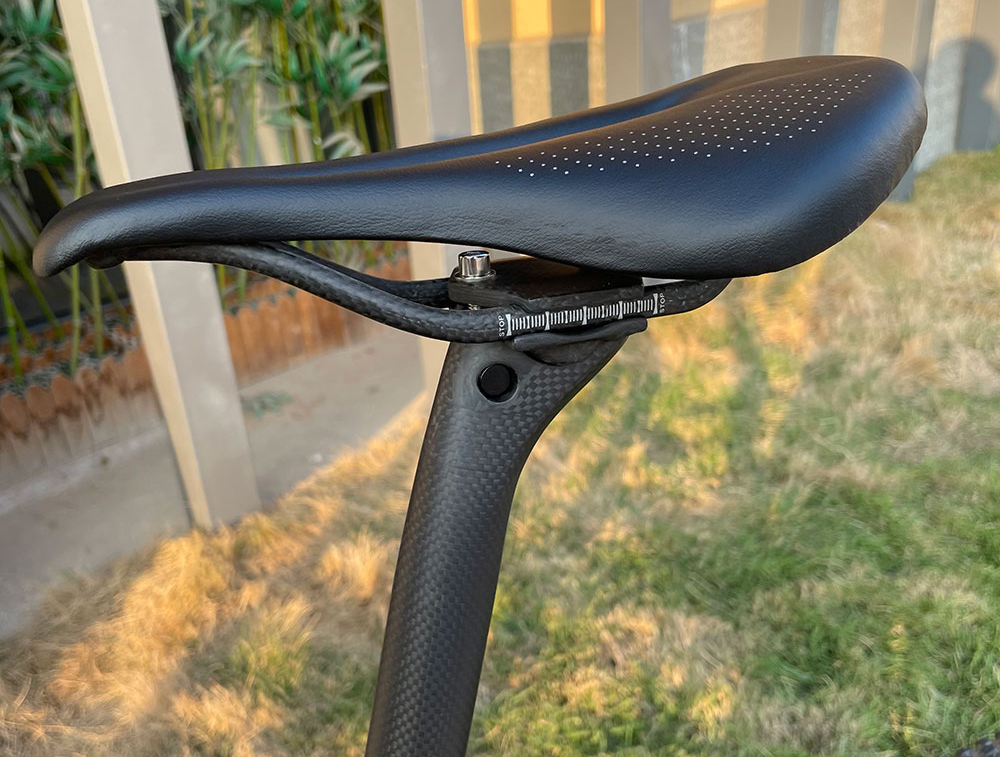
Conclusion: The Perfect Balance
In conclusion, the CS200 from Trifox Bike is a full carbon saddle that truly balances comfort, weight, and performance. Its ultra-lightweight design, ergonomic shape, and breathable cushioning make it a standout choice for cyclists who prioritize efficiency, comfort, and value for money.
Whether you're a seasoned pro or just starting out, the CS200 is worth considering for your next bike upgrade. With its impressive features and positive customer reviews, it's easy to see why this saddle has become a favorite among cyclists everywhere. So why wait?

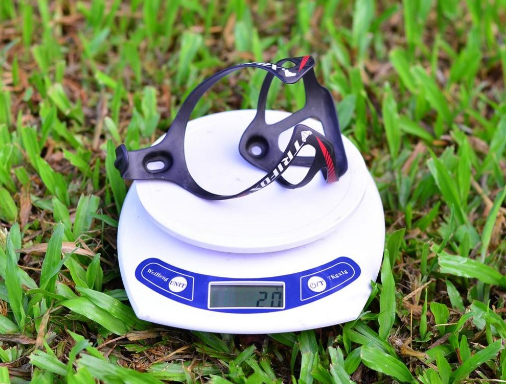
Cycling is a fantastic way to stay active, explore new places, and enjoy the great outdoors. Whether you're commuting to work, hitting the trails on a weekend adventure, or participating in a grueling endurance race, staying hydrated is crucial for maintaining performance, preventing fatigue, and ensuring overall safety.
Yet, carrying water can sometimes feel like an unnecessary burden, weighing you down and making the ride less enjoyable. The solution? Investing in the right bike bottle essentials to stay hydrated without slowing down.
The Importance of Hydration
Before diving into the must-have bike bottle accessories, let's emphasize why staying hydrated is so important. During physical activity, your body sweats to regulate temperature, leading to fluid loss. If you don't replenish these lost fluids, you can experience dehydration symptoms such as thirst, headaches, muscle cramps, and even more severe issues like heatstroke. Hydration also supports cognitive function, helps maintain blood pressure, and ensures your muscles have the oxygen and nutrients they need to keep going.
Choosing the Right Bike Bottle
1. Insulation and Material
Insulated Bottles: Insulated bottles keep your drinks cool for longer, which is especially useful in warmer weather. Look for vacuum-sealed, double-walled bottles that minimize heat transfer.
Lightweight Materials: Opt for bottles made from lightweight materials like stainless steel or aluminum. Plastic bottles are cheaper but can retain flavors and may degrade over time.
2. Capacity
Standard Capacity (500-750 ml): Suitable for most rides, offering enough water without being too bulky.
Large Capacity (1000+ ml): Ideal for long-distance rides or hot climates where you'll need more fluid.
3.Ease of Use
Screw-Top vs. Flip-Cap: Screw-tops are leak-proof but can be fiddly to open on the move. Flip-caps are easier to access but may leak if not secured properly.
Self-Sealing Valves: Some high-end bottles have self-sealing valves that allow you to sip without removing the cap, reducing the risk of spills.
4. Durability and Maintenance
Dishwasher Safe: Makes cleaning easier and more thorough.
Impact Resistance: Important if you're riding on rough terrain or in urban environments where the bottle could get knocked around.
Bike Bottle Mounts and Holders
Once you've chosen the perfect bottle, you need a reliable way to attach it to your bike. Here are some options:
1.Standard Bottle Cages
Material: Lightweight aluminum or carbon fiber.
Compatibility: Fit most standard water bottles.
Placement: Typically mounted under the downtube for easy access.
2.Under-Saddle Bags
Storage: Carry multiple bottles or even snacks.
Access: Easier to reach than frame-mounted bottles, especially on rough terrain.
Aesthetic: Great for those who prefer a cleaner look on their frame.
3. Aerodynamic Bottle Cages
Design: Sleek, integrated cages that reduce drag.
Placement: Often mounted on the seat tube or behind the saddle.
Ideal For: Racers and triathletes looking to maximize speed.
Hydration Systems
For ultra-endurance rides or hot, humid climates, consider a hydration system:
1. CamelBak and Other Hydration Packs
Bladder Capacity: Ranges from 1.5 to 3 liters.
Tube and Bite Valve: Allows for hands-free drinking.
Ventilation: Packs with good back ventilation reduce sweating and discomfort.
2. Hydration Packs with Pockets
Storage: Carry extra gear, nutrition, and tools.
Customizable: Some packs let you adjust the bladder and pocket positions for a perfect fit.
Hydration Tips for Cyclists
1. Pre-Hydrate: Start your ride already hydrated by drinking plenty of water before setting out.
2. Sip Regularly: Aim to take small sips every 10-15 minutes to maintain hydration levels.
3. Electrolytes: Use sports drinks or electrolyte tablets if your ride is long or intense to replace lost sodium, potassium, and magnesium.
4. Temperature: Drink cool water to help your body regulate temperature more effectively.
5. Monitor Urine Color: A good indicator of hydration status – clear to light yellow is ideal.
Staying hydrated while cycling doesn't have to be a hassle. With the right bike bottle essentials and a bit of planning, you can keep yourself refreshed and ready to tackle any ride. Remember, hydration is not just about performance; it's about safety and enjoyment. So, invest in good quality bottles, holders, and systems, and make sure you're always prepared to keep pedaling. Happy riding!
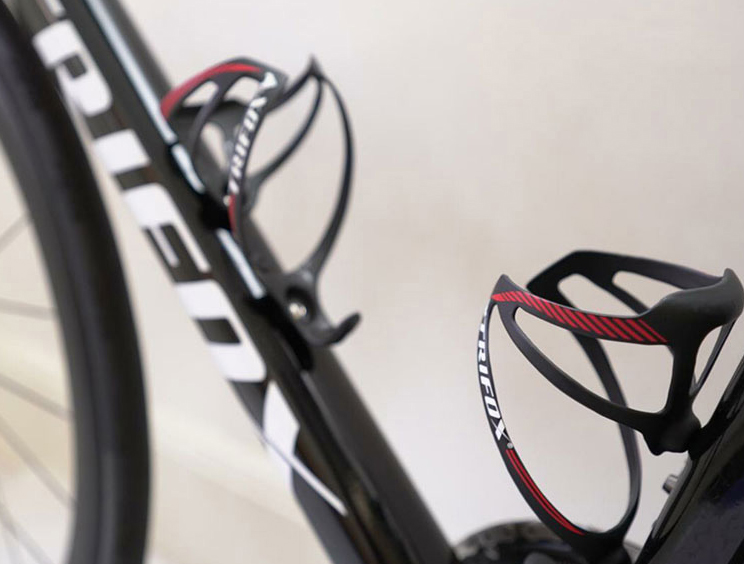
If you're a cyclist, staying hydrated is essential, and bottle cages are a must-have accessory. But if you’re wondering, “Do bottle cages fit all bikes?” the answer isn’t as straightforward as you might think. Let’s dive into the details to help you find the right fit for your ride.
Standard Bottle Cage Mounts
Most modern bikes come with pre-drilled mounting holes on the frame, typically located on the downtube and/or seat tube. These holes are designed to fit standard bottle cages, which use two bolts for attachment. If your bike has these mounts, you’re in luck – most standard cages will fit without issue.
Compatibility Considerations
While many bikes support bottle cages, there are exceptions and special cases:
1. Small Frames: Smaller bike frames, especially on road or mountain bikes, may have limited space for bottle cages. In some cases, only one cage may fit, or you might need a compact or side-loading cage.
2. Aero Bikes: High-performance aero bikes often have unconventional frame designs that may not accommodate traditional cages. Some use integrated hydration systems or require proprietary cages.
3. Carbon Frames: If your bike has a carbon frame, ensure your cage bolts are tightened to the manufacturer’s recommended torque to avoid damaging the frame.
4. Non-Standard Mounts: Some bikes, like folding bikes or certain gravel bikes, may use alternative mounting systems or require adapters.
Solutions for Unique Bikes
If your bike doesn't have standard mounts, don’t worry! There are plenty of solutions:
- Strap-On Cages: These use straps to attach to your frame, making them versatile for bikes without mounts.
- Seatpost Mounts: Attach a cage to your seatpost for an extra hydration option.
- Handlebar Cages: Perfect for bikes with limited frame space, these mount directly to your handlebars.
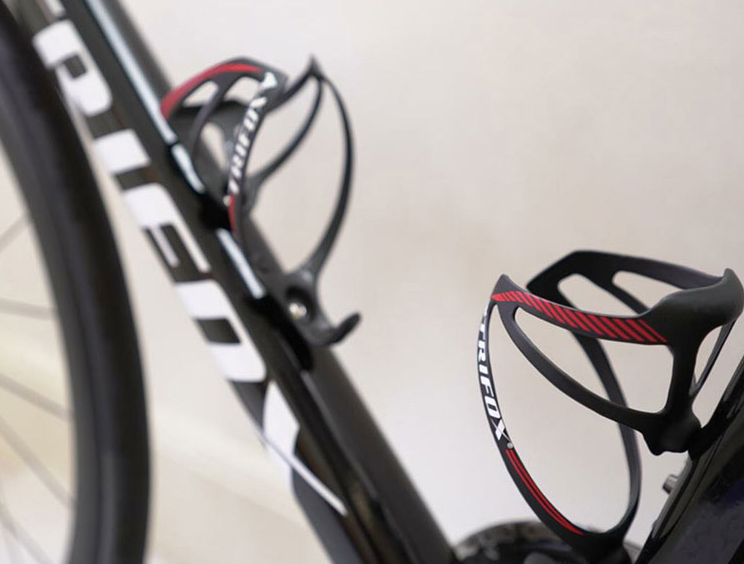
While most bikes can accommodate bottle cages, it’s important to consider your bike’s specific design and mounting options. With the right cage or adapter, you can ensure you stay hydrated on every ride.
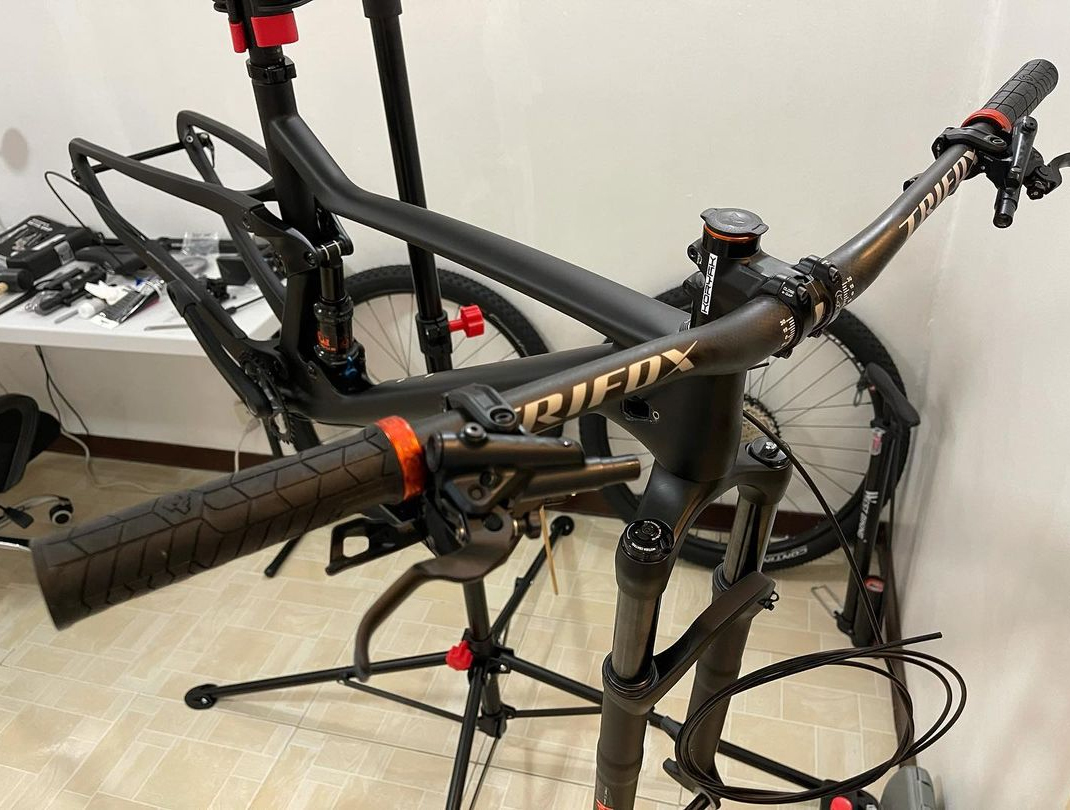
Cycling is all about efficiency, speed, and comfort, and one of the best ways to enhance all three is by upgrading to aero bars. Whether you're a competitive triathlete, a long-distance rider, or simply looking to improve your performance, aero bars can transform your cycling experience.
Trifoxbike.com offers a range of high-quality carbon bike handlebars, including aero bars, designed to help you ride faster and smarter. Here’s why you should consider making the switch.
What Are Aero Bars?
Aero bars, or triathlon bars, are handlebar extensions that allow riders to adopt a more aerodynamic position. By positioning your arms closer together and lowering your torso, aero bars reduce wind resistance, which is one of the biggest obstacles to speed. This streamlined posture can significantly improve your efficiency, especially during long rides or races.
Benefits of Aero Bars
1. Increased Speed: The primary advantage of aero bars is their ability to cut through the wind. By reducing drag, you can maintain higher speeds with less effort, making them a game-changer for time trials and triathlons.
2. Improved Comfort: Aero bars provide an additional hand position, reducing strain on your wrists, shoulders, and back during long rides. This can help prevent fatigue and keep you riding longer.
3. Better Power Transfer: The forward-leaning position engages your core muscles, allowing for more efficient power transfer from your legs to the pedals.
Why Choose Carbon Aero Bars?
Carbon fiber aero bars, like those available at Trifoxbike.com, offer the perfect balance of strength, stiffness, and lightweight performance. Carbon’s natural vibration-dampening properties also enhance comfort, making it an ideal material for long-distance cycling. Plus, the sleek design of carbon aero bars adds a professional touch to your bike's aesthetics.
If you're ready to take your cycling to the next level, investing in aero bars is a smart move. Visit [Trifoxbike.com]to explore their selection of carbon bike handlebars and find the perfect fit for your ride. With improved speed, comfort, and efficiency, aero bars are the upgrade your cycling experience deserves. Don’t let wind resistance hold you back—embrace the aero advantage today!
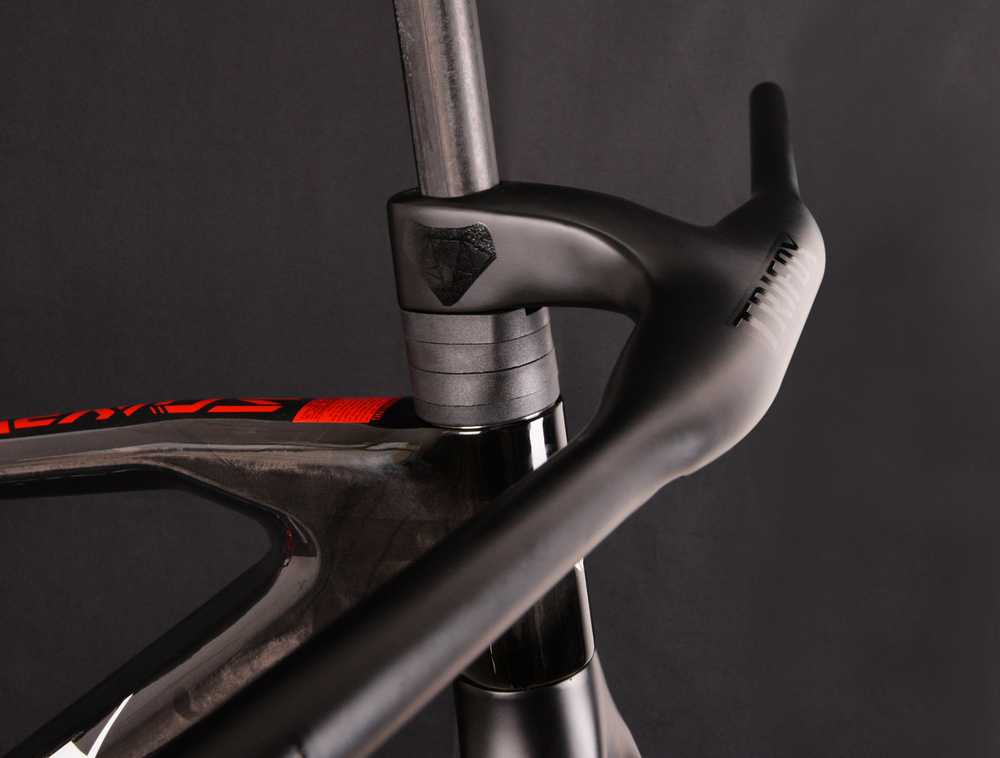
Choosing the right handlebar size is crucial for comfort, control, and performance on your bike. Whether you’re upgrading your current handlebars or building a new bike, knowing the correct size ensures a perfect fit. Here’s a guide to help you determine your bike handlebar size and why it matters.
Why Handlebar Size Matters
Handlebar size affects your riding posture, steering precision, and overall comfort. A handlebar that’s too wide or narrow can lead to discomfort, reduced control, and even fatigue during long rides. Finding the right size ensures optimal handling and a more enjoyable cycling experience.
Key Measurements to Consider
1. Width: Handlebar width is measured from end to end. Road bike handlebars typically range from 38cm to 46cm, while mountain bike handlebars are wider, usually between 680mm and 800mm. The ideal width depends on your shoulder width and riding style.
2. Diameter: Handlebars come in different diameters, with the most common being 31.8mm (oversized) and 25.4mm (standard). Ensure your handlebar diameter matches your stem clamp size.
3. Reach and Drop: For drop handlebars (common on road bikes), reach refers to the horizontal distance from the center of the bar to the brake hoods, while drop is the vertical distance from the top to the bottom of the bars. These measurements affect your riding position and comfort.
How to Measure Your Handlebar Size
1. Check the Current Handlebar: Look for markings or labels on your existing handlebar that indicate its size. If there are no markings, use a tape measure to determine the width and diameter.
2. Measure Your Shoulders: A simple way to estimate the ideal handlebar width is to measure the distance between the bony protrusions on the front of your shoulders. This measurement often correlates with the optimal handlebar width.
3. Consult Your Bike's Manual: If you're unsure, refer to your bike's manual or contact the manufacturer for specifications.
Choosing the Right Handlebar
When selecting a handlebar, consider your riding discipline and preferences. For example, wider handlebars provide more control on mountain bikes, while narrower bars improve aerodynamics on road bikes. Carbon handlebars, like those from Trifox Bike, offer a lightweight and durable option for performance-focused riders.
Knowing your bike handlebar size is essential for a comfortable and efficient ride. By measuring your current handlebar, considering your shoulder width, and understanding key dimensions, you can find the perfect fit. If you’re looking to upgrade, explore high-quality options like Trifox Bike’s carbon handlebars, which combine performance and style. With the right handlebar, you’ll enjoy better control, comfort, and confidence on every ride. Happy cycling!
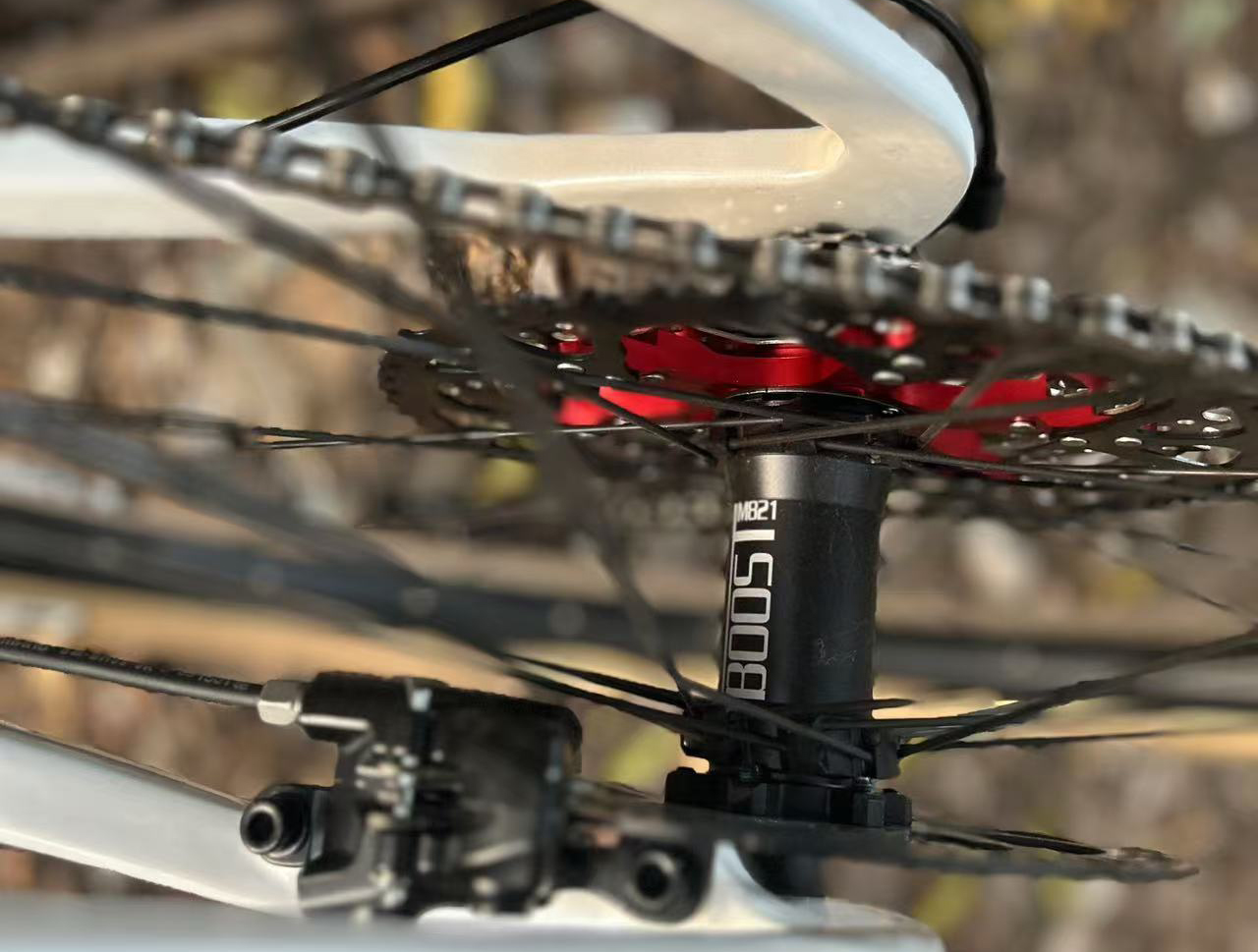
The Basics of a Bike Hub
A hub is the core part of a bicycle wheel, located at the center where the spokes connect. It houses the axle, bearings, and other mechanisms that allow the wheel to rotate freely. Hubs come in various types, including front hubs, rear hubs, and those designed for specific disciplines like road biking, mountain biking, or commuting.
Key Components of a Hub
1. Axle: The axle is the rod that runs through the hub, connecting it to the bike's frame or fork. It can be quick-release, thru-axle, or bolt-on, depending on the bike’s design.
2. Bearings: Bearings reduce friction between the hub and axle, enabling smooth rotation. They can be either loose ball bearings or sealed cartridge bearings.
3. Hub Shell: The outer shell is the part of the hub where the spokes attach. It’s typically made from lightweight materials like aluminum or carbon fiber.
4. Freehub or Freewheel: Found on the rear hub, this mechanism allows the wheel to spin independently of the pedals when coasting. Modern bikes usually feature a freehub, which integrates with the cassette.
Types of Hubs
- Front Hub: Simpler in design, the front hub connects to the fork and focuses on smooth rotation.
- Rear Hub: More complex, the rear hub includes the freehub or freewheel and is responsible for transferring power from the pedals to the wheel.
- Disc Brake Hub: Designed for bikes with disc brakes, these hubs have mounts for brake rotors.
- Internal Gear Hub: Found on some commuter bikes, these hubs contain gears inside the hub shell, offering a low-maintenance alternative to derailleurs.
Why Hubs Matter
A well-functioning hub is essential for a smooth, efficient ride. High-quality hubs reduce friction, improve power transfer, and enhance durability. They also play a role in wheel stiffness and overall bike performance. Whether you’re climbing hills, sprinting on flat roads, or navigating rough trails, a reliable hub ensures your wheels spin effortlessly.
Maintenance Tips
To keep your hubs in top condition, regularly check for play or grinding noises, which may indicate worn-out bearings. Clean and lubricate the hubs periodically, and consider professional servicing if you’re unsure about maintenance.
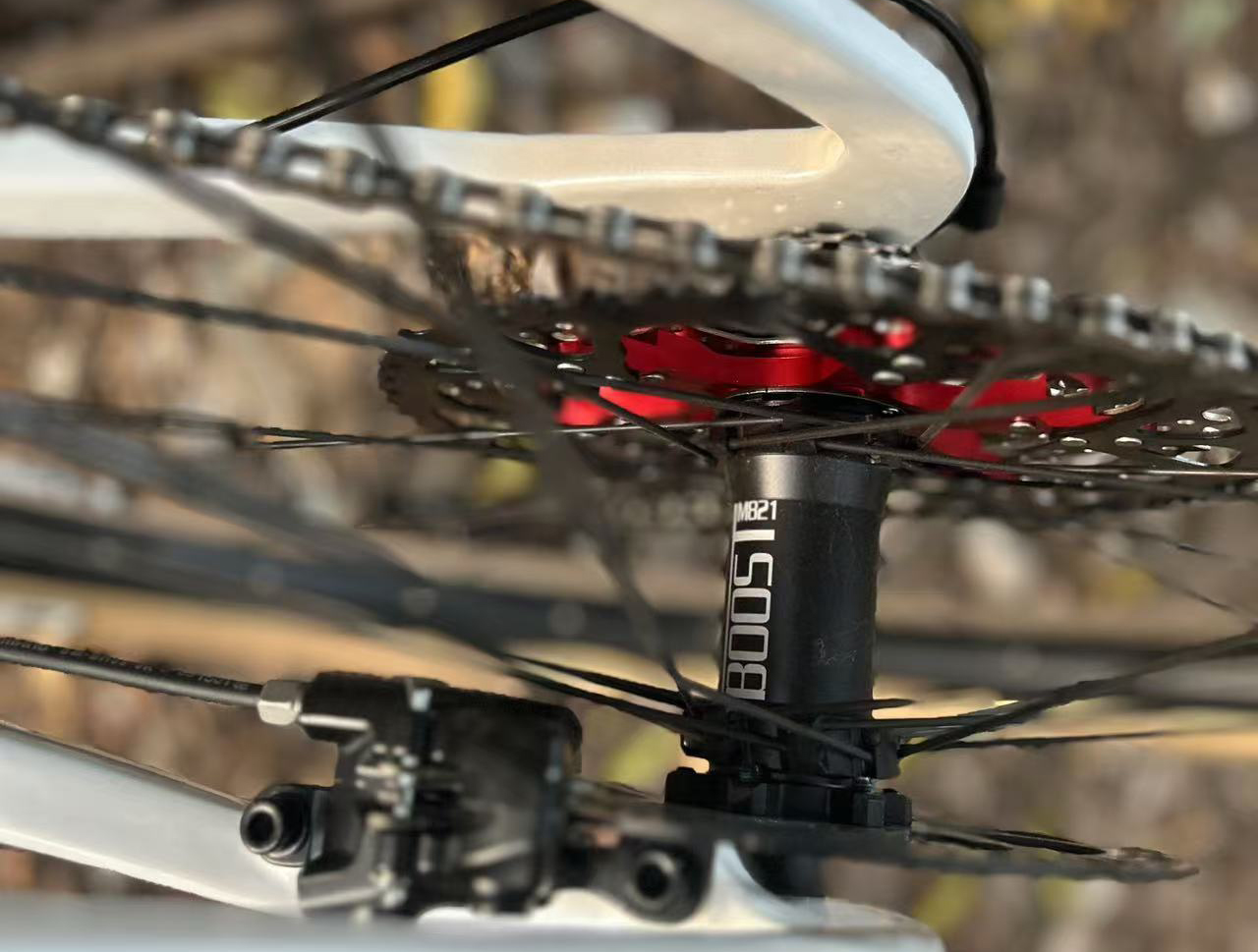
The hub is a small but vital part of your bike, ensuring smooth rotation and efficient power transfer. Understanding its role and keeping it well-maintained can significantly enhance your riding experience. Whether you’re a casual rider or a seasoned cyclist, a reliable hub is key to keeping your wheels—and your adventures—rolling smoothly.
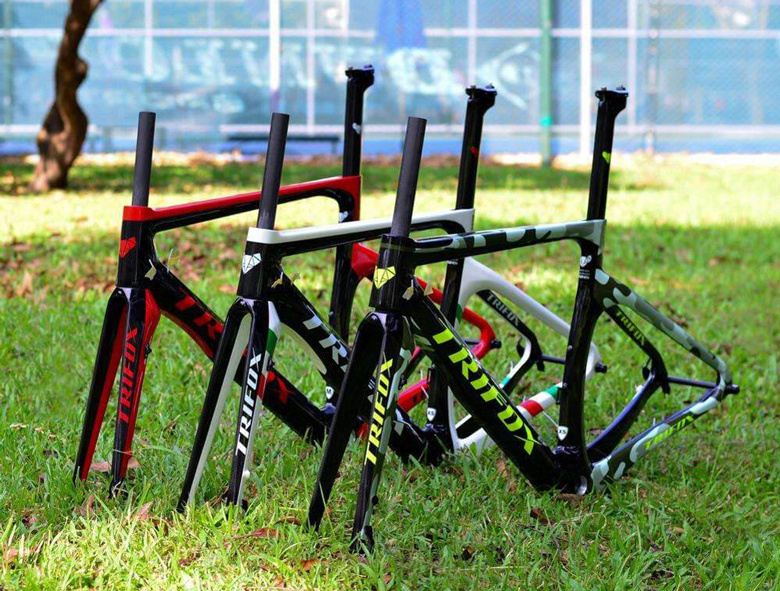
If you're considering diving into the world of road cycling, one of the first questions you’ll likely ask is, “How much does a good road bicycle cost?” The answer isn’t straightforward, as road bikes come in a wide range of prices depending on their components, materials, and intended use. Let’s break down the factors that influence the cost and help you determine what you can expect to pay for a quality road bike.
Entry-Level Road Bikes ($500 - $1,000)
For beginners or casual riders, entry-level road bikes are a great starting point. These bikes typically feature aluminum frames, basic components, and mechanical shifting systems. While they may lack the advanced features of higher-end models, they are reliable, lightweight, and perfect for commuting, fitness riding, or weekend adventures. Brands like Trifox Bike offer affordable options that deliver excellent value for money.
Mid-Range Road Bikes ($1,000 - $3,000)
Mid-range road bikes strike a balance between performance and affordability. These bikes often feature carbon fiber frames, which are lighter and more efficient than aluminum, along with better-quality components like hydraulic disc brakes and mid-tier drivetrains (e.g., Shimano 105 or SRAM Rival). If you’re serious about cycling and want a bike that can handle longer rides, faster speeds, and more varied terrain, this price range is a solid investment.
High-End Road Bikes ($3,000 - $7,000+)
High-end road bikes are designed for performance enthusiasts and competitive cyclists. They boast top-tier carbon frames, advanced aerodynamic designs, and premium components like electronic shifting (e.g., Shimano Dura-Ace or SRAM Red). These bikes are incredibly lightweight, stiff, and responsive, making them ideal for racing or high-intensity training. While the price tag is steep, the performance gains are undeniable.
Custom and Premium Options ($7,000+)
For those seeking the ultimate road bike, custom or premium models offer unparalleled craftsmanship and performance. These bikes often feature bespoke designs, cutting-edge materials, and the latest technological innovations. If you’re a professional rider or simply want the best of the best, this category is worth considering.
Why Choose a Carbon Road Bike?
Carbon fiber is the material of choice for high-performance road bikes due to its lightweight, stiffness, and vibration-damping properties. Trifox Bike offers a range of carbon road bike frames that combine affordability with top-tier performance, making them an excellent option for riders looking to upgrade without breaking the bank.
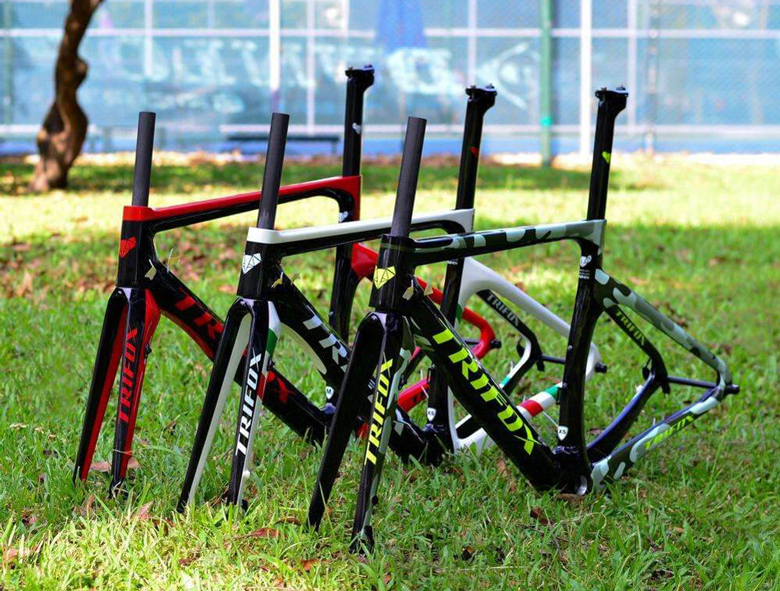
The cost of a good road bicycle depends on your needs, goals, and budget. Entry-level bikes are perfect for beginners, while mid-range and high-end models cater to more experienced riders. If you’re looking for a balance of performance and value, a carbon road bike from Trifox Bike is a fantastic choice. Whether you’re commuting, training, or racing, investing in the right road bike will enhance your riding experience and help you achieve your cycling goals. Happy pedaling!
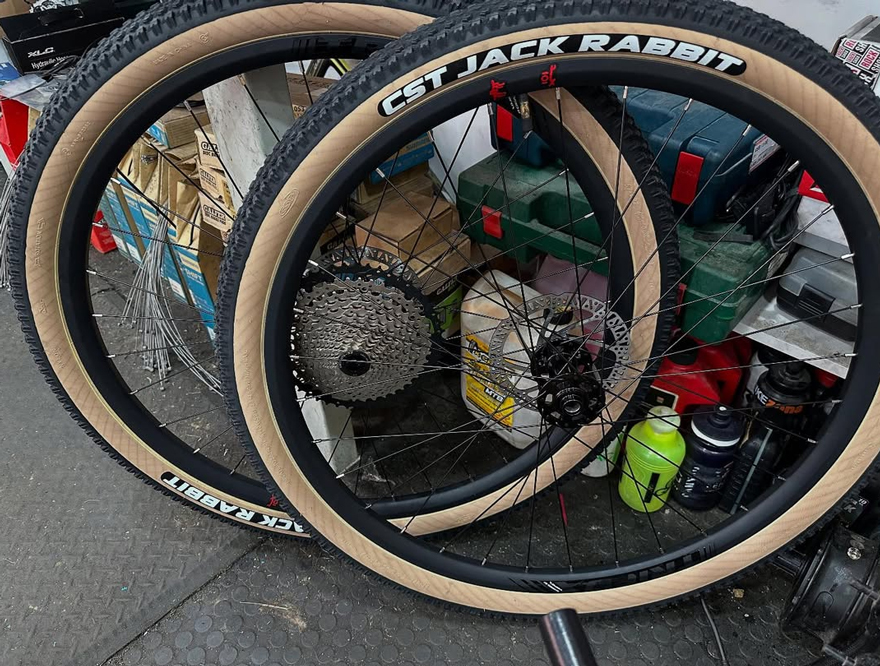
When it comes to choosing the right bike rims, one of the key decisions you’ll face is whether to go with hooked or hookless designs. Both options have their pros and cons, and the best choice depends on your riding style, tire preferences, and performance goals. Let’s break down the differences to help you decide which rim type is right for you.
What Are Hooked Rims?
Hooked rims feature a small lip or "hook" on the inner edge of the rim bed. This hook helps secure the tire bead in place, preventing it from slipping off under high pressure or during aggressive cornering. Hooked rims are the traditional design and are compatible with a wide range of clincher tires, making them a versatile choice for most cyclists.
What Are Hookless Rims?
Hookless rims, as the name suggests, lack the hooked lip. Instead, they have a straight, flat rim bed. This design relies on a precise fit between the tire and rim to keep the tire securely in place. Hookless rims are often lighter and stronger due to their simpler construction, but they require specific tires that are designed to work with hookless systems.
Key Differences
1. Tire Compatibility: Hooked rims work with most clincher tires, while hookless rims require tubeless tires specifically designed for hookless use.
2. Weight: Hookless rims are typically lighter, which can be a significant advantage for weight-conscious riders.
3. Durability: Hookless rims are often stronger and less prone to damage because they lack the stress points created by the hook.
4. Ease of Use: Hooked rims are generally easier to set up and maintain, especially for riders who frequently switch tires.
Which Is Right for You?
-Hooked Rims: Ideal for riders who value versatility, use a variety of tires, or prefer a more traditional setup. They’re also a safer choice for high-pressure applications.
-Hookless Rims: Best for performance-oriented cyclists who prioritize weight savings and strength. They’re particularly popular in mountain biking and gravel riding, where tubeless setups are common.
Ultimately, the choice between hooked and hookless rims comes down to your specific needs and preferences. If you’re unsure, consult with a bike specialist or consider the type of riding you do most often. Both designs have their place in the cycling world, and choosing the right one can enhance your ride quality and overall experience.
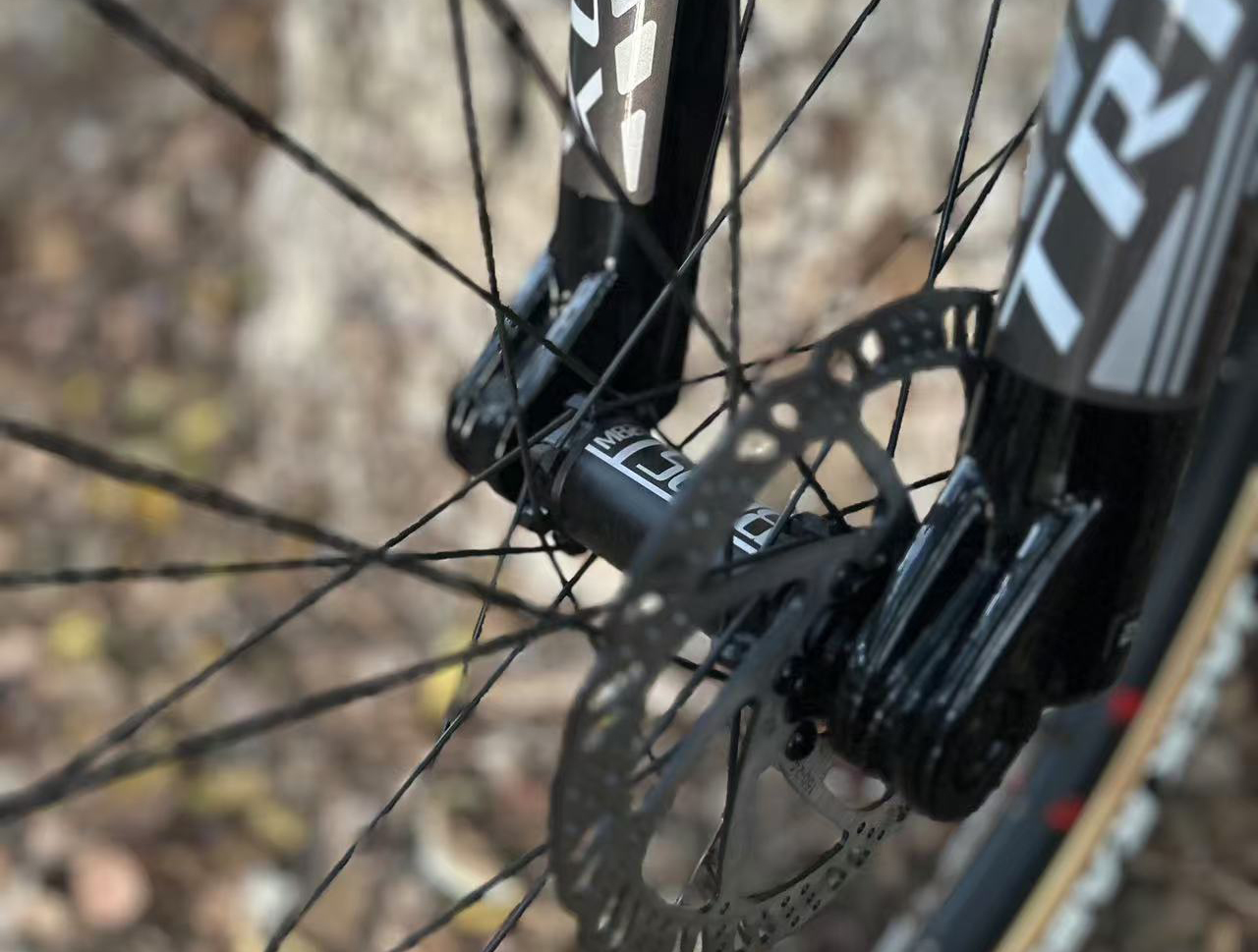
If you're serious about cycling, you've probably heard the term "FTP" thrown around. But what exactly is FTP, and why is it such a big deal for your training? Let’s break it down.
FTP stands for Functional Threshold Power, and it’s a measure of the highest average power (in watts) you can sustain for one hour. Think of it as your cycling fitness benchmark—it tells you how much power you can produce over a sustained effort without fatiguing too quickly. FTP is a key metric for cyclists because it helps you understand your current fitness level, set training zones, and track progress over time.
Why FTP Matters
1. Personalized Training Zones: Your FTP is the foundation for determining your training zones, which are critical for structuring effective workouts. Whether you're doing endurance rides, interval training, or recovery sessions, knowing your FTP ensures you're training at the right intensity to meet your goals.
2. Track Progress: By regularly testing your FTP, you can see how your fitness improves over time. An increase in FTP means you’re getting stronger and more efficient on the bike.
3. Race Strategy: For competitive cyclists, knowing your FTP helps you pace yourself during races or long rides. Pushing too hard above your threshold can lead to burnout, while staying below it ensures you can maintain a steady effort.
How to Test Your FTP
The most common way to test your FTP is with a 20-minute test. After a proper warm-up, ride at your maximum sustainable effort for 20 minutes, then take 95% of your average power from that effort to estimate your FTP. For example, if you average 200 watts during the test, your FTP would be around 190 watts.
How to Use FTP in Training
Once you know your FTP, you can tailor your workouts to target specific energy systems. For example:
Endurance: Ride at 55-75% of your FTP to build aerobic base fitness.
Tempo: Train at 76-90% of FTP to improve sustained power.
Threshold: Work at 91-105% of FTP to push your limits and increase your threshold power.
VO2 Max: Go above 106% of FTP for short, intense efforts to boost your anaerobic capacity.
Tips for Improving Your FTP
Consistency: Regular training is key. Incorporate a mix of endurance rides, intervals, and recovery sessions.
Progressive Overload: Gradually increase the intensity and duration of your workouts to challenge your body.
Recovery: Don't underestimate the importance of rest. Your body adapts and gets stronger during recovery.
In conclusion, FTP is more than just a number—it's a powerful tool to guide your training, measure your progress, and help you become a stronger, faster cyclist. Whether you're a beginner or a seasoned rider, understanding and improving your FTP can take your cycling performance to the next level. So, grab your bike, test your FTP, and start training smarter!

























































